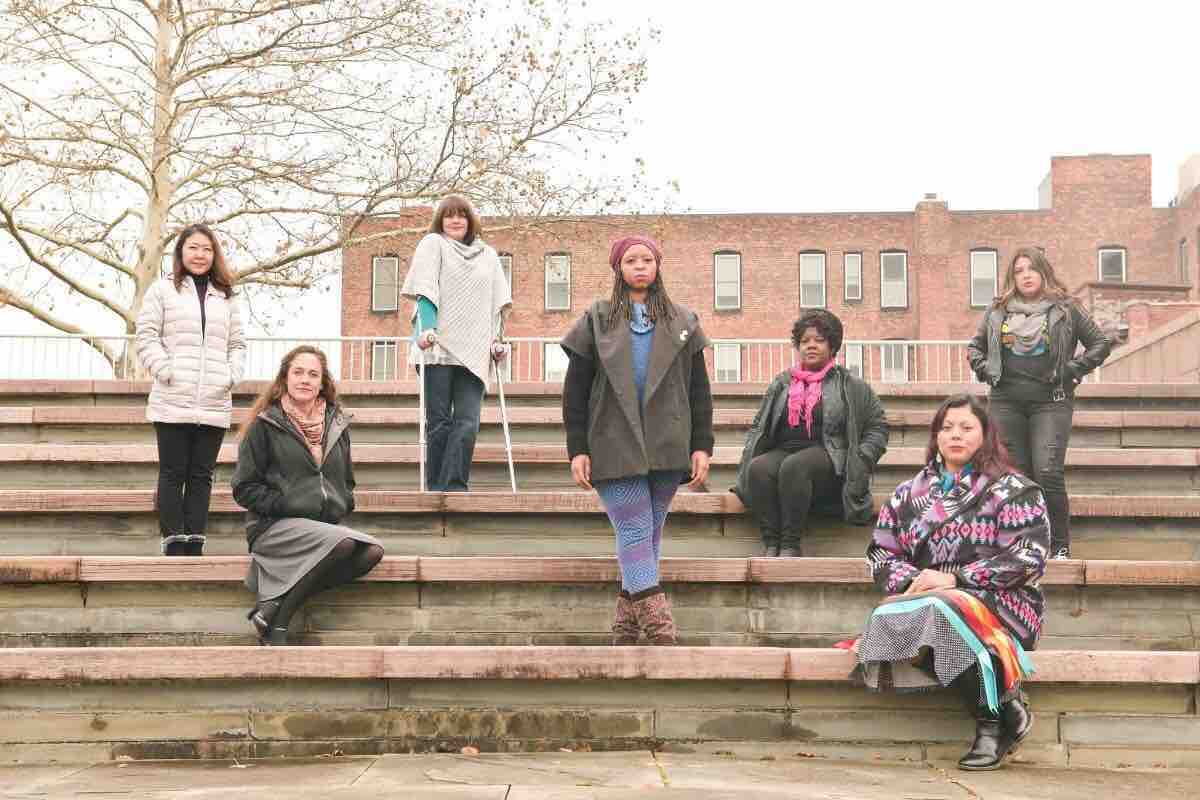EDITOR’S NOTE: A reflection on the 2018 Ruby Woo Pilgrimage, a sacred journey through the intersectional story of the struggle of women for equality in the U.S.
We sat in our talking circle one last time. Twenty-two women circled up in Conference Room B of the United Methodist Building in Washington, D.C. Across the street, the Capitol Building lay nearly dormant two days after the 2018 Midterm Election. Around the corner, National Park rangers buzzed as they processed the challenge issued by three African American leaders of the Ruby Woo Pilgrimage.
That morning, on our final stop on the pilgrimage, we walked through the Belmont-Paul Women’s Equality National Monument — a national monument in honor of the fight for women’s suffrage and the National Women’s Party — the radical women’s movement whose public agitations ultimately won the 19th Amendment.
Throughout the struggle for women’s suffrage, the political construct of race divided and hobbled the movement for women’s empowerment. The first women’s empowerment movement was born, not in lily white countryside of Seneca Falls, New York. Rather, it flowed from the radical organizing work of black and white abolitionists in the city of Philadelphia, situated on the border between Northern free states and Southern slavocracy. The Philadelphia Female Anti-Slavery Society was organized and led by 18 women in 1833, including African-American women Charlotte, Margaretta and Sarah Forten; Harriet Forten Purvis; Sarah Mapps Douglass; Grace Bustill Douglass; and Hetty Reckless. These elite black women freedom fighters joined forces with abolitionists Lucretia Mott and Angelina and Sarah Grimke, among others, to build the foundations of what we now call the movement for women’s equality. These women raised the equivalent of one million dollars to build Pennsylvania Hall where they hosted the second-ever national gathering of Female Anti-Slavery Societies in 1838. When a white mob surrounded Pennsylvania Hall days after it opened, these black and white women locked arms and pushed their way through the crowd to safety. The mob burned down the hall, and the women continued their convention at a local school the very next day.
But most narratives of women’s empowerment erase the Fortens, Purvises, and Douglasses from the annals. The Belmont-Paul Women’s Equality National Monument is no different. Rather, the National Monument to Women’s Equality begins its narrative in Seneca Falls. It features the chair of Elizabeth Cady Stanton and the desk of Susan B. Anthony. I understood the significance of these artifacts — evidence of a movement of God in our land. But where is the desk of Margaretta Forten? Where is the chair of Sara Mapps Douglass?
And flashing forward, where are the banners and marching shoes of Alice Paul and Lucy Burns’ contemporaries, Ida B. Wells and Mary Church Terrell and Charlotte Forten (Margaretta’s niece)? Wells and Church Terrell had one Vistaprint-type standing banner each in separate rooms, but no other evidence of their movements and sacrifices.
And where was the desk of Dr. Mabel Lee, the Chinese woman pastor of First Chinese Baptist Church of New York City, who was a suffragist and contemporary of Paul and Burns? Lee did not even merit a banner.
Throughout American history, the politics of women’s suffrage bowed to racism and pushed women of color to the background. White women erased and sidelined our contributions in order to placate white men and secure their own power. Now — on the last day of the Ruby Woo Pilgrimage, which had rolled from Seneca Falls’ fabled origin story to encounter the Philadelphia story as told by Dr. Ruby Sales, through New York City’s immigrant struggle for suffrage, over the hallowed ground of Boardwalk Hall in Atlantic City where Fannie Lou Hamer faced down the powers of disenfranchisement — now, standing in the Belmont-Paul National Women’s Equality Monument, the same white-washed story lined the walls and halls.
Grieved and enraged, red-lipped women of color opened their mouths and raised their voices.
“You must do better,” said one.
“The movement itself was racist,” said another. “To make things right, you must tell the whole story and celebrate the contributions of suffragist movements of color now.”
“You must include the stories of, not only African-American women,” said still another, “but also Native American, Latina, and Asian-American women in the struggle.”
They must do better. If they don’t’ know the stories. They must learn the stories. These are our nation’s stories. They are not black stories, Latina stories, Native American, Asian stories. They are the story of America.
We must do better. We must not accept white-washed narratives anymore.
We must not allow the political constructs of white supremacy to pit women against each other ever again.
As we concluded our final talking circle in the United Methodist Building, around the corner from the Belmont-Paul National Monument, 22 diverse women from across the country joined hands in the spirit of Fannie Lou Hamer and sang:
“This little light of mine, I’m gonna let it shine.”
Yes. We must shine.

